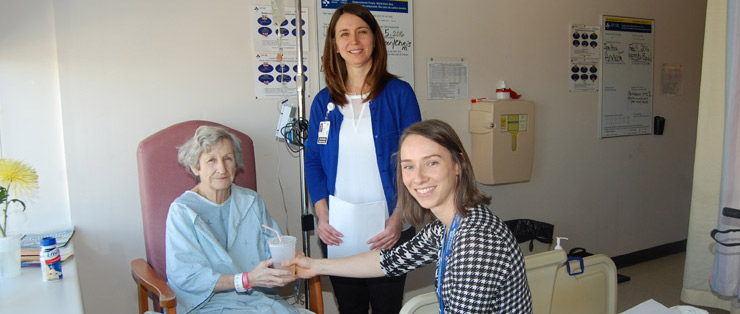
As part of the “More 2 Eat” project on 8 West at The Ottawa Hospital, Dietitian Sophie Wanamaker (right) and Melanie Williams, Dietetic Technician, ensure that patients such as Theresa Buffone receive the proper nutrition.
For patients in hospital, eating meals can be one more task on the road to recovery – but without the nutrients packed into every bite, patients can become malnourished and risk a longer hospital stay and more complications.
Malnutrition is a major problem at hospitals across Canada. The 8 West Medicine unit at The Ottawa Hospital is participating, along with four other hospitals, in the Canadian Malnutrition Task Force’s “More 2 Eat” project, which identifies patients who are, or are at risk of becoming, malnourished and helps them eat more.
“This project allows us to become leaders in implementing care processes that prevent our patients from becoming malnourished while admitted,” said Suzanne Obiorah, Professional Practice Manager for Dietetics, Speech-Language Pathology and Audiology.
According to a 2013 landmark study by the task force, approximately 45 percent of patients admitted to acute-care hospitals in Canada are malnourished when they arrive and 20 percent experience a decline in nutrition status while admitted. Early detection is key to helping patients recover.
According to the task force, common barriers to eating include poor appetite, fatigue and pain stemming from illness or injury. Patients might also have difficulty opening packages or unwrapping food, might not be able to reach their tray or eat without help, and often miss meals or have interrupted meals because of appointments. Hospital staff members can help overcome these barriers.
“There are many barriers to eating that play a bigger role than the taste of the food,” said Obiorah.
Day in the life of a food tray: How The Ottawa Hospital serves one million meals a year
Behind the scenes, a dedicated patient food services team at each campus works to a strict schedule to serve roughly one million meals every year, all of them carefully timed to fit the busy unit schedules. The system includes rigorous checks to cater to patient allergies and dietary requirements, and is surprisingly flexible, able to respond to last-minute patient transfers and diet changes.
“Mealtime can be the highlight of the day for some patients,” said Mike Knight, Patient Food Services Manager at the Civic Campus. “We want to make sure we live up to their expectations.”
Here’s a look at a day in the life of a food tray – from Food Services up to patient rooms.
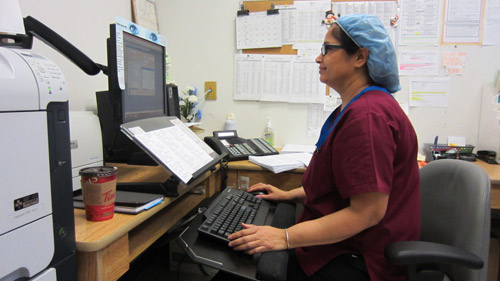
1. Diet clerks process patient meal information from admitting, from the units and directly from patients through bedside menu selection. The clerks print tickets that say exactly what needs to go to each patient.
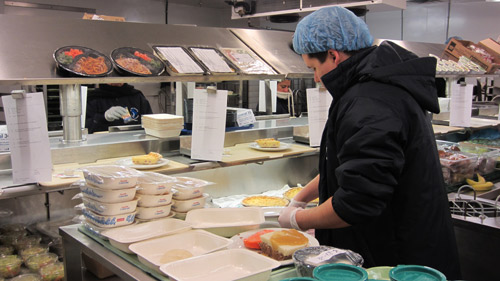
2. Staff members assemble food trays around an automated carousel. “This is where a lot of the action happens,” said Knight. Food that will be served hot is placed on one side; food that will be served cold is placed on the other.
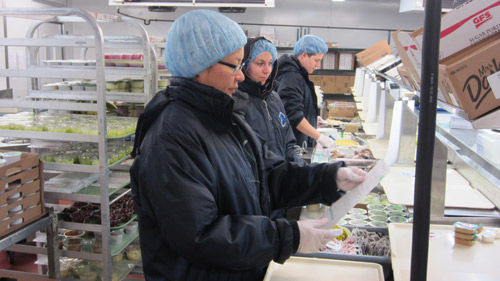
3. The ‘starter’ places the ticket up so that staff members know what each patient needs.
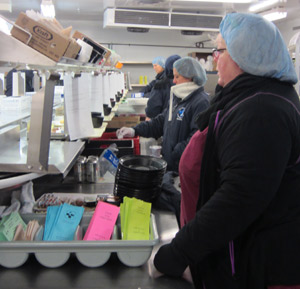
4. At the end of the carousel, the ‘checker’ compares the ticket to what’s on the tray. If there’s something wrong, she puts a coloured warning flag on the tray to alert a supervisor.
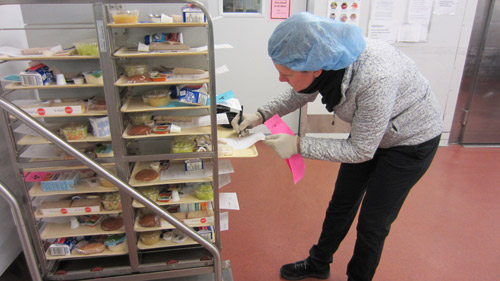
5. The supervisor double-checks any meals for patients with allergies, as well as those flagged by the checker.
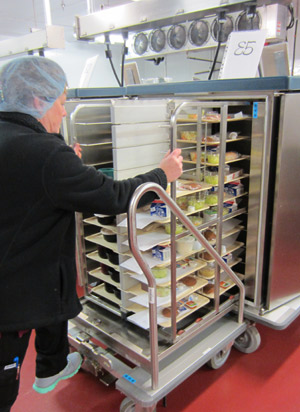
6. Carts are docked in machines that will heat up only one side of the tray. The machines are programmed to come on at specific times so the food is hot enough before going up to the unit. The room’s ambient temperature of 4°C keeps food on the other side of the tray cold.
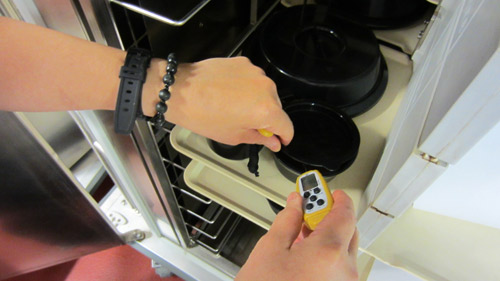
7. At each unit’s designated pick-up time, a porter or waiter checks food temperature, adds any last-minute changes, and then wheels the cart up to the floor.
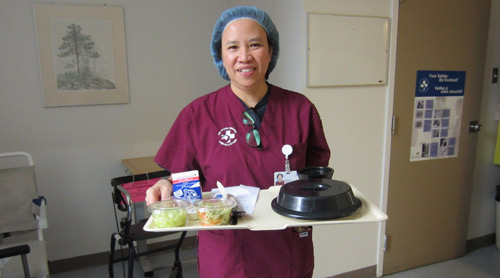
8. The waiters and waitresses serve patients their meals. Gizella Dumali, who has worked at the hospital for 20 years, likes chatting with patients to cheer them up as she serves meals. “The patients tell me their stories. Sometimes they just want to talk to somebody, and I can make them feel a bit better,” she said.

Support patient care and research at
The Ottawa Hospital


 To reset, hold the Ctrl key, then press 0.
To reset, hold the Ctrl key, then press 0.